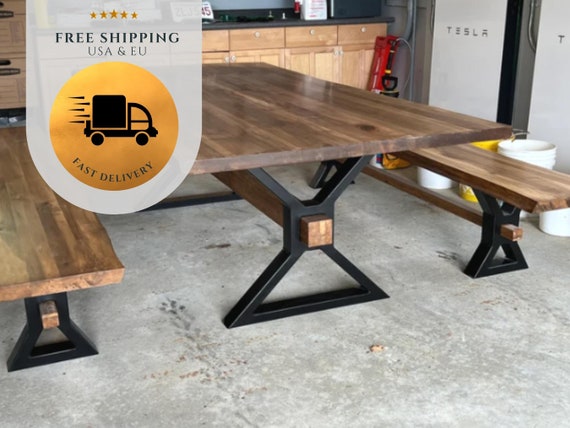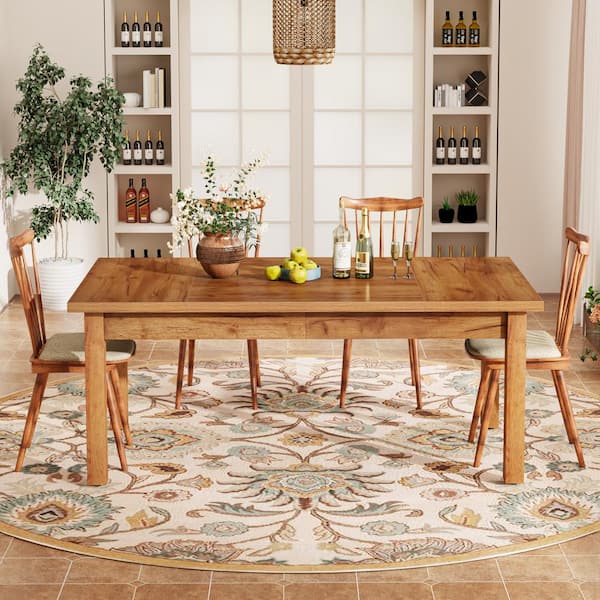Discover the very best Materials for Dining Room Table Legs for each Style
Discover the very best Materials for Dining Room Table Legs for each Style
Blog Article
Picking the Perfect Eating Table: What Styles Work Best for Your Home?
Selecting the perfect eating table for your home can be a nuanced procedure that stabilizes visual appeals and functionality. To browse these choices effectively and discover a table that truly matches your home, think about the complying with aspects in information.
Examining Your Room
Assessing the dimensions and format of your eating area is an important initial step in picking the best dining table. Begin by gauging the size and width of the area, accounting for entrances, home windows, and other architectural functions that might influence table placement. This makes certain that your table not only fits but also permits comfy movement around it.
Consider the number of individuals you commonly captivate. A table needs to suit your home's day-to-day demands while supplying sufficient flexibility for periodic guests. As a guideline of thumb, allot a minimum of 24 inches of table size per individual to guarantee a comfy dining experience.
It's additionally important to preserve suitable clearance around the table. Ideally, there must be at least 36 inches in between the table edge and wall surfaces or other furniture, enabling simple accessibility and motion. For spaces where chairs with arms or extra storage space units like buffets are involved, increasing this clearance to 48 inches is suggested.
Lighting and atmosphere play considerable roles as well. Guarantee that your table straightens with existing lighting components or prepare for sufficient lights services. This extensive spatial analysis warranties that your table not only fits physically yet additionally harmonizes with your area's overall performance and visual.
Popular Table Styles

Typical table often include elaborate details, bent legs, and rich wood coatings, evoking a sense of timeless beauty. They are best for homes with traditional style or those looking to include a touch of elegance to their eating location.
Modern dining tables prioritize simplicity and clean lines, often integrating products like glass and steel. These tables are excellent for contemporary areas, providing a smooth and clean appearance that enhances minimalist design philosophies.
Rustic table, on the other hand, stress all-natural materials and a handcrafted look - dining room table legs. They commonly include recovered wood and a distressed coating, creating a warm and welcoming atmosphere. These tables work well in farmhouse-style homes or those seeking a relaxing, organic feel
Industrial eating tables incorporate basic materials such as steel and timber, usually showcasing an utilitarian visual. This style is her latest blog fit for lofts or city areas, including a touch of tough charm and longevity to the eating experience.
Each style provides distinctive advantages, making it important to select one that aligns with your home's overall style and your personal choices.
Material Choices
When selecting a table, the choice of product plays an essential role in identifying both the table's appearances and capability. Timber, steel, glass, and composite products each offer special benefits and challenges, making it critical to line up the material with your home's design and way of life demands.
Timber is a classic and flexible alternative, readily available in varieties such as oak, walnut, and mahogany. Known for its longevity and warmth, timber enhances both standard and modern insides. It calls for routine maintenance to avoid scratches and bending.
Steel tables, often crafted from stainless-steel, aluminum, or functioned iron, are applauded for their modern-day appeal and effectiveness. They are specifically suited for industrial or minimalist setups yet can be vulnerable to his response dents and may feel cold to the touch.
Glass dining tables bring an air of style and visibility, suitable for smaller spaces as they produce an impression of even more space. While easy to tidy, glass can be vulnerable to smudges and needs cautious dealing with to avoid chips and splits.
Composite materials, such as MDF and plywood, offer cost-efficient and personalized remedies, though they might lack the long life of natural products. Choosing the appropriate product ensures your eating table is both a useful possession and an aesthetic delight.
Sizes And Shape Factors To Consider
After determining the appropriate material for your table, the next factor to consider is selecting the right sizes and shape to match your space. The shape of the table significantly influences the area's visual and performance. Rectangular tables, one of the most typical shape, are optimal for larger areas and can suit a greater variety of guests. They also permit for a much more formal dining experience. Alternatively, round tables promote a feeling of affection and are exceptional for smaller dining areas, motivating discussion by getting rid of edges and making everyone feel just as consisted of.
As a guideline of thumb, designate at least 24 inches of table width per person to make certain comfy dining. In addition, take into consideration the table's clearance space: there should be at least 36 inches between the table side and the wall surfaces or various other furnishings. Prolonging tables supply adaptability if you frequently hold larger celebrations, giving added seats when required without inhabiting extra space daily.
Matching Your Design
Selecting a table that integrates with your existing design is pivotal in developing a natural and inviting area. Begin by evaluating your existing interior layout style, whether it be modern, standard, rustic, or diverse. The eating table should enhance the total visual, not contend with it. A streamlined, minimalist table with tidy lines is optimal for a contemporary home, while a vintage, ornate table fits a more conventional setup.
Color and product are equally substantial. If your decoration includes cozy tones and all-natural products, think about a wood table to improve the organic feeling. Alternatively, a glass or steel table might be better in an area dominated by awesome shades and industrial elements. Take note of the surface, as it needs to mirror various other furnishings and fixtures to keep consistency.
A rough-hewn, read this article recovered timber table can include personality to a rustic room, while a sleek marble surface can elevate a lavish dining area. A well-matched dining table not only enhances aesthetic allure but likewise enriches the overall dining experience.

Final Thought
Picking the perfect dining table necessitates mindful factor to consider of area, style, materials, shape, and size. Conventional tables enhance timeless interiors with abundant timber surfaces, while modern-day tables match contemporary setups with glass and steel.
Report this page